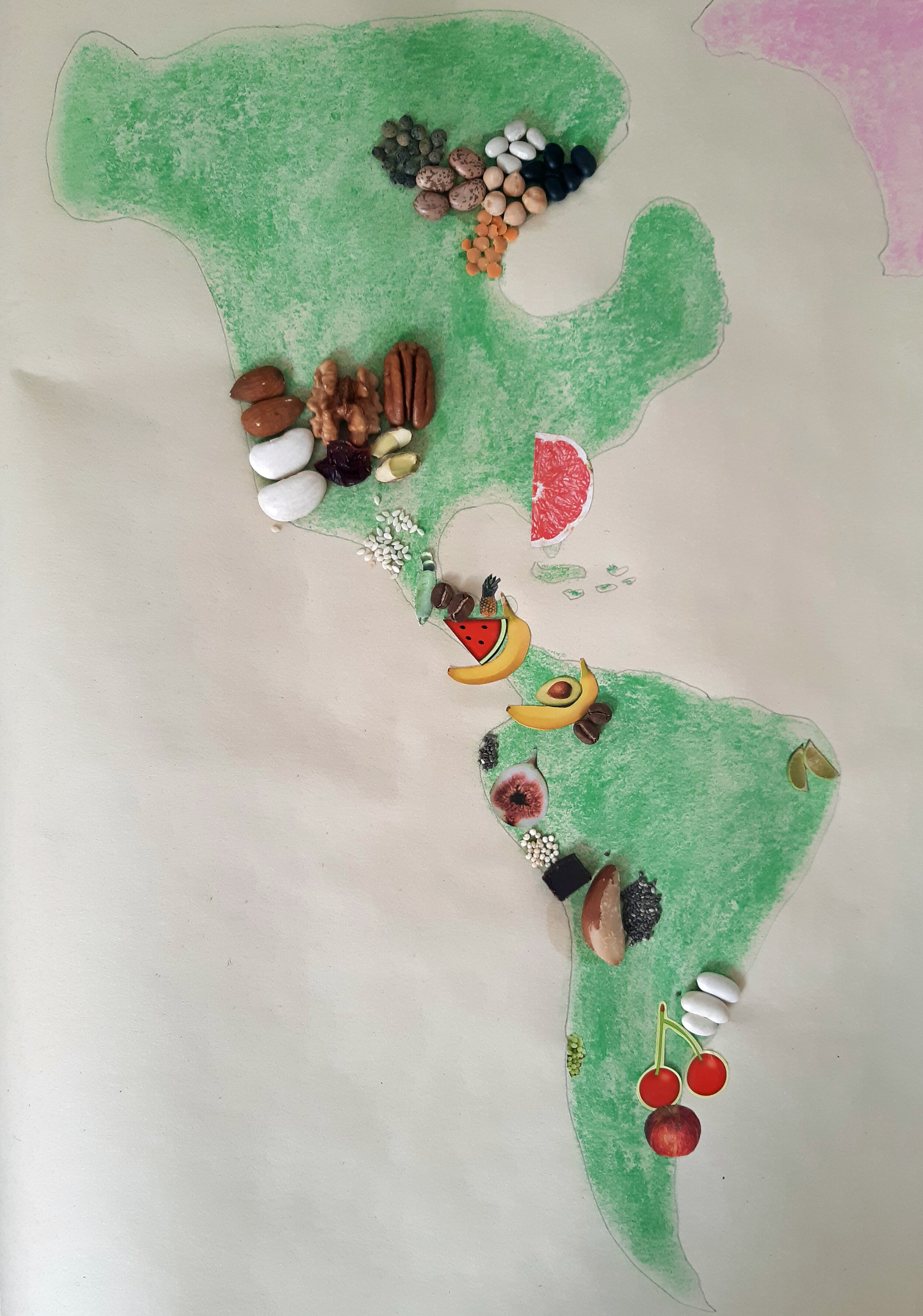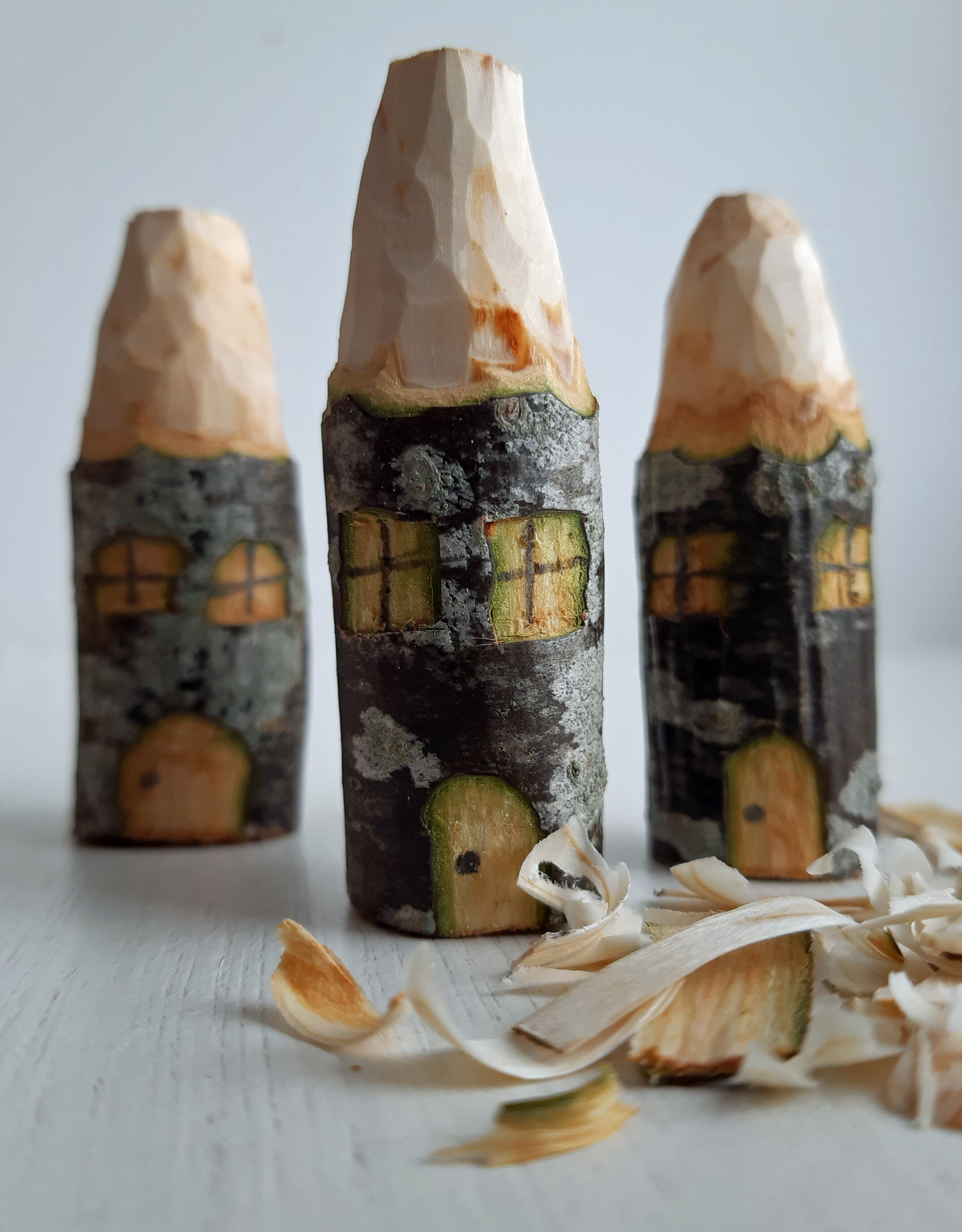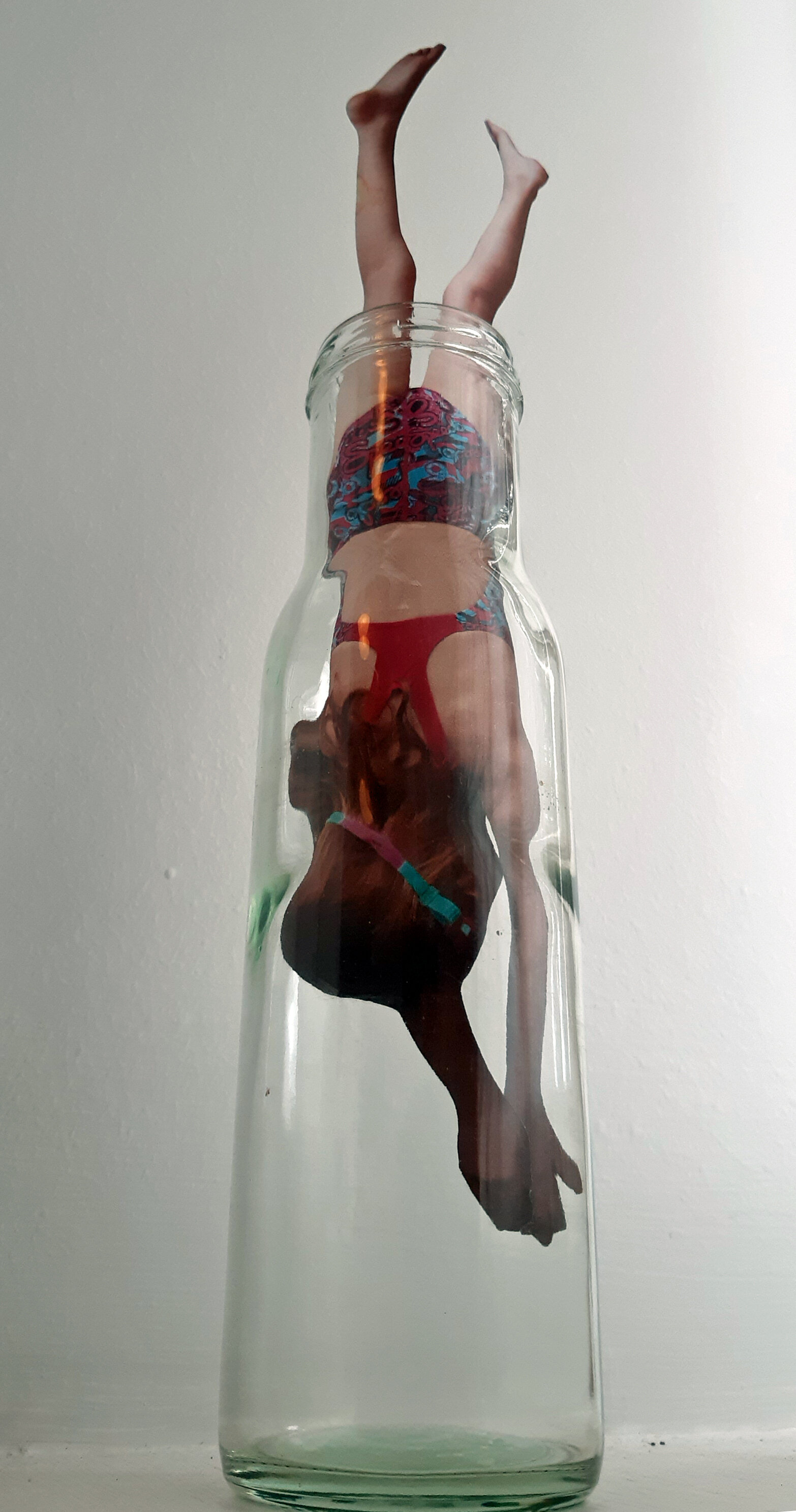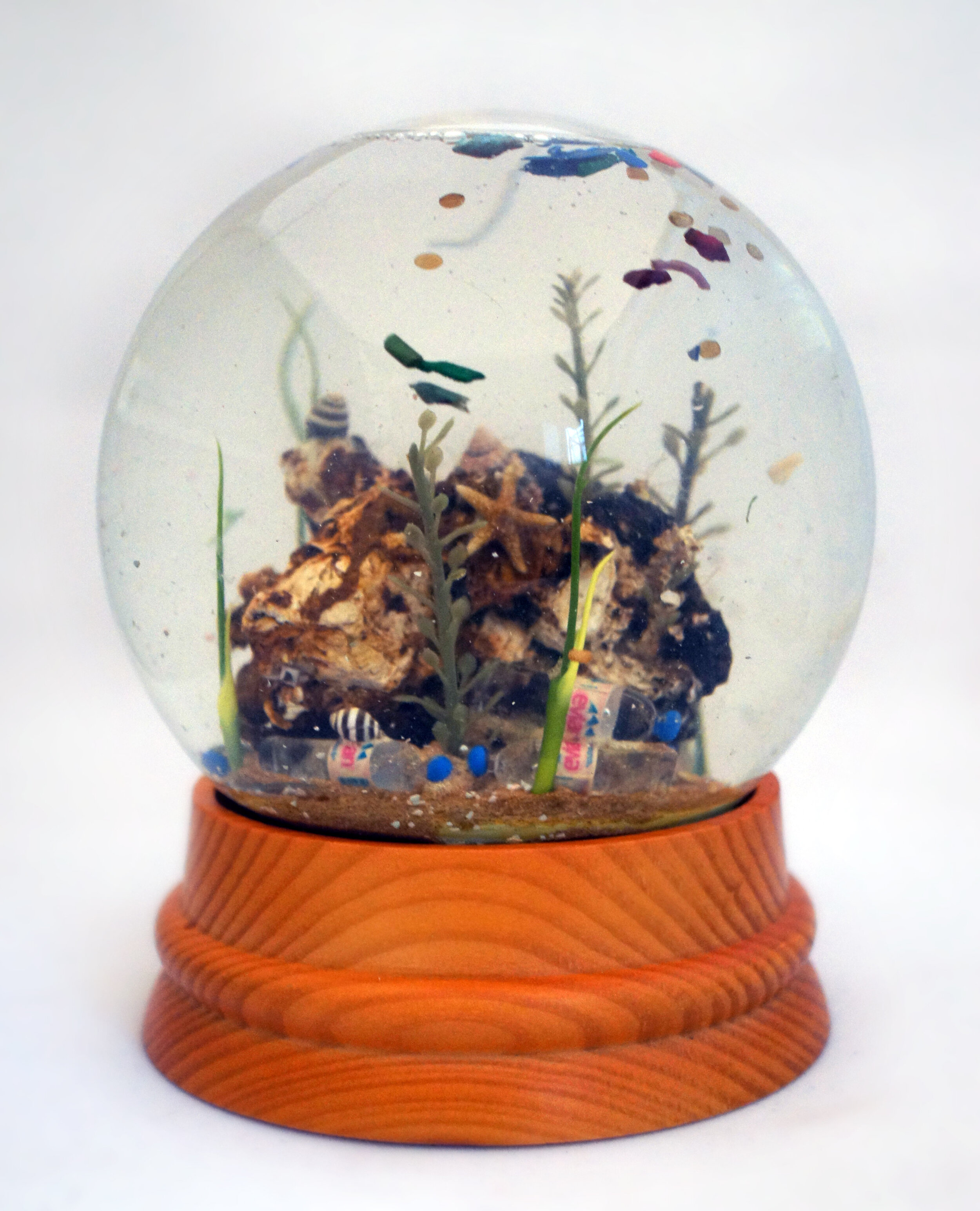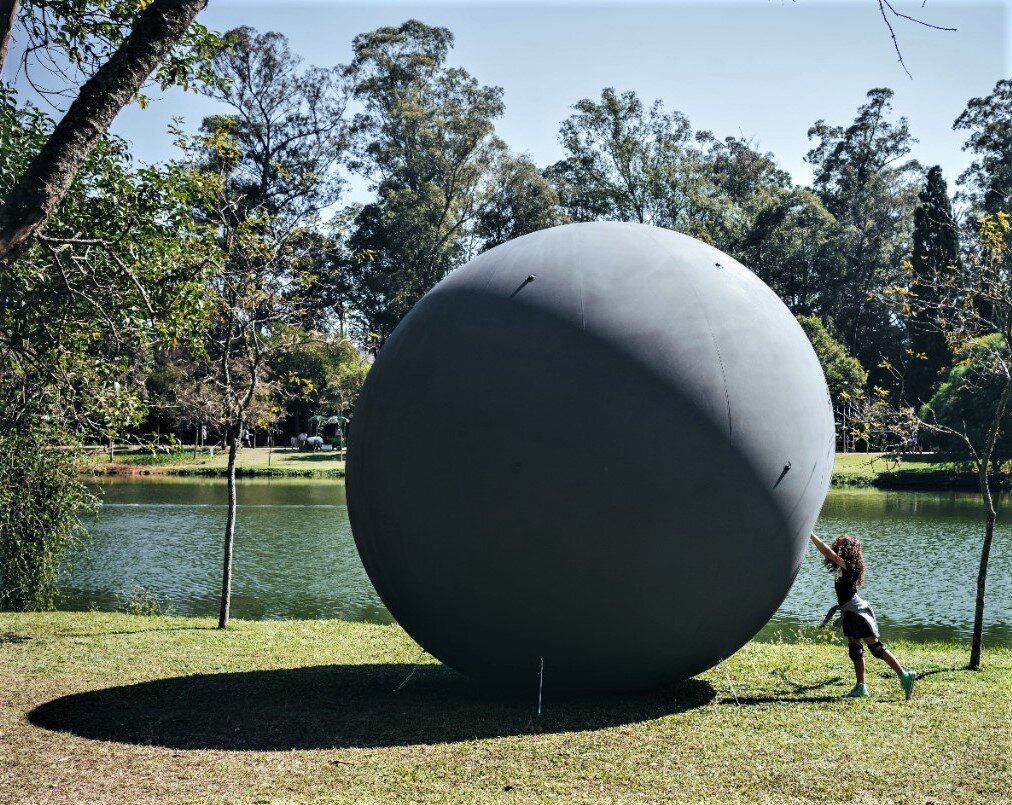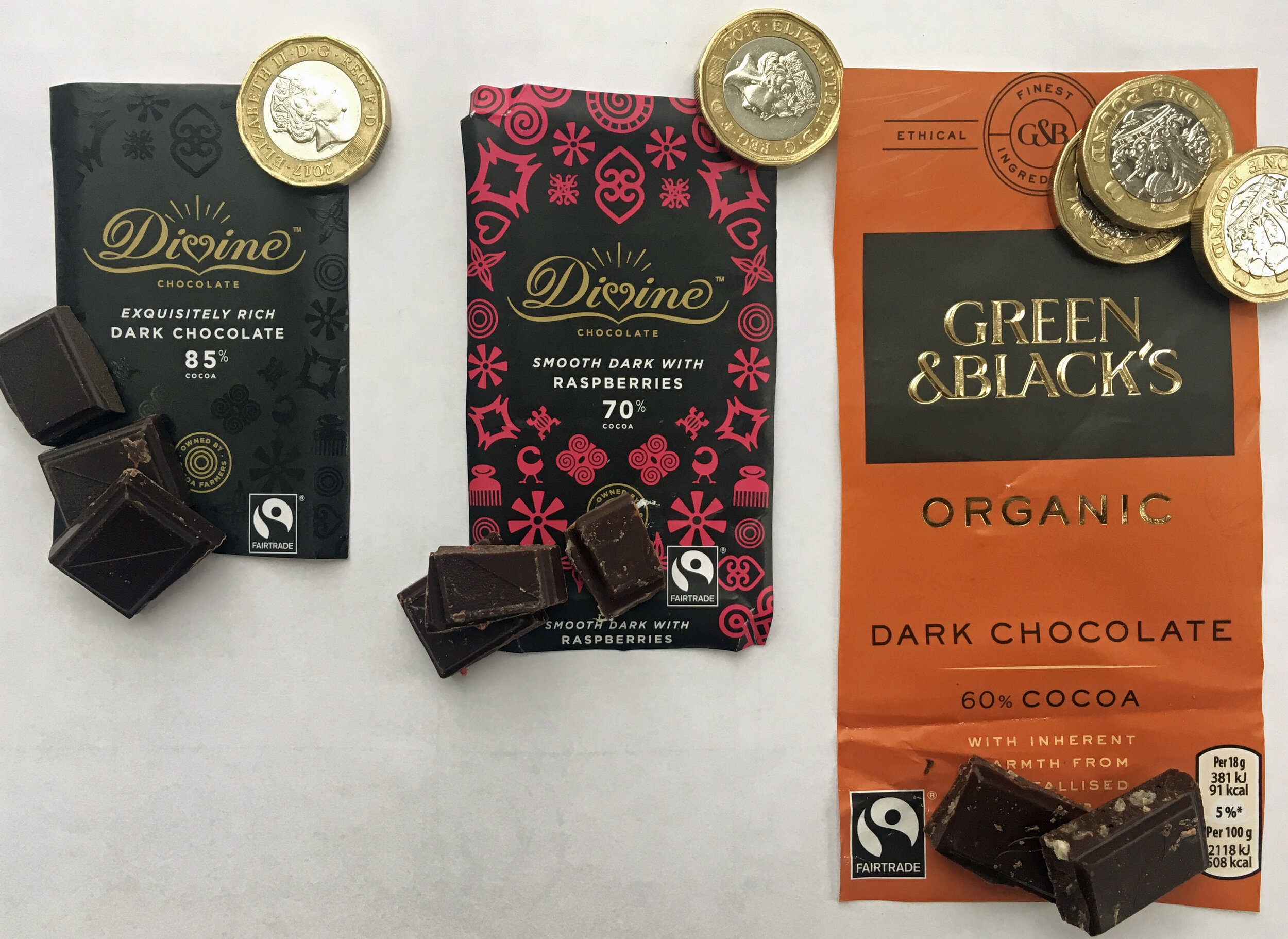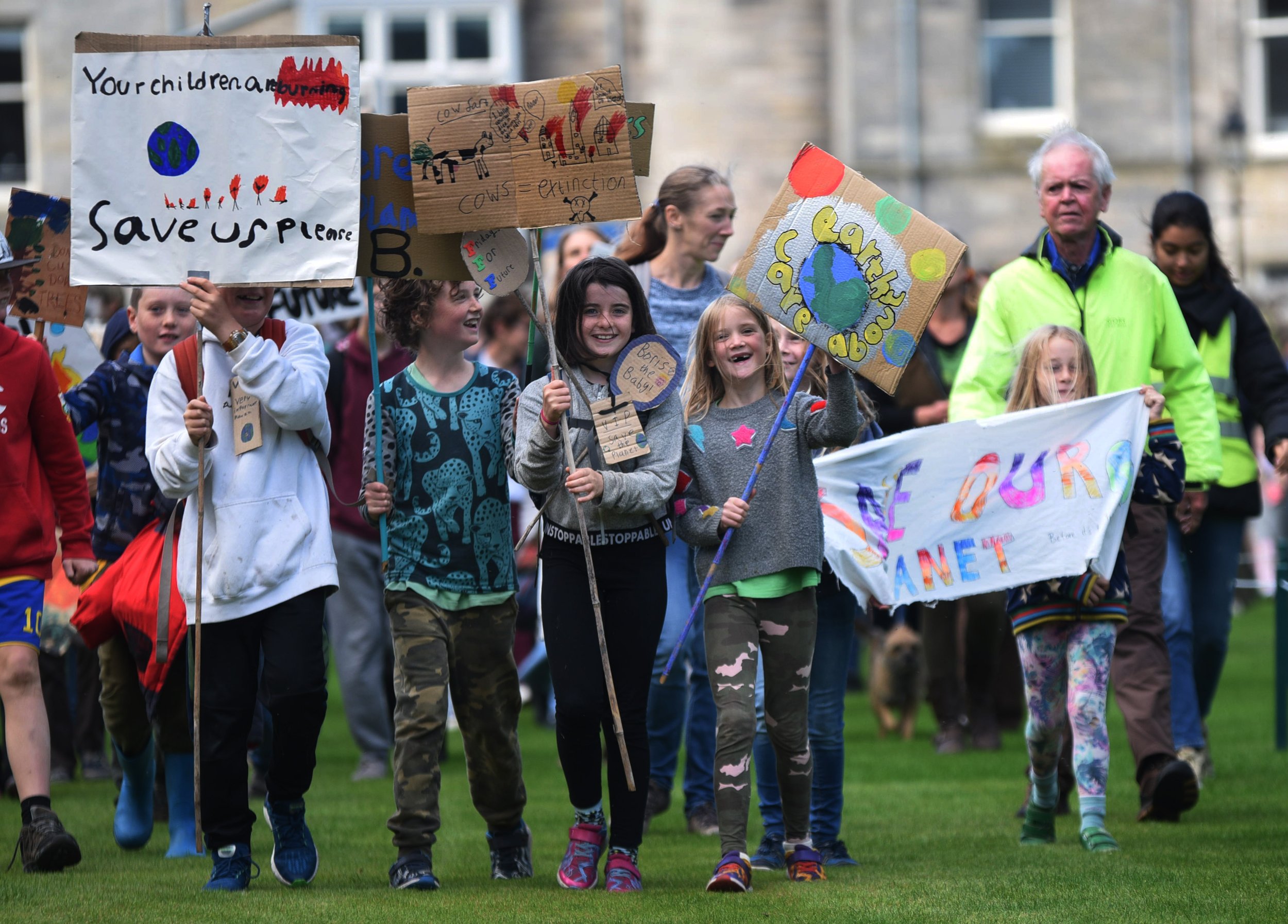COP26 Climate Countdown
In October 2021 the UK hosted the 26th UN Climate Change Conference of the Parties (COP26) in Glasgow. To get families involved in such a seismic event that otherwise felt very much like it was happening ‘over there’, Big Dreams Little Footprints and Wild Planet Explorers ran a 14-week countdown with a weekly Activity-Action post for families. Each week contained fun activity ideas and practical actions that families could take in the lead up to COP26. They are all posted below on this page and may well be useful for anyone who would like a 14-week Plan of Action in their lives.
Photo credit: David Gilliver - David Gilliver Photography
Wild Planet Explorers is an environmental education business based in Fife, founded by biologist and conservationist Joanna McFarlane. WPE engages with 1000s of children across Scotland with its original, fun, interactive and educational animal biology and conservation sessions for 3-9 years and its dynamic presentations on Biology, Habitats and Conservation, focusing on the Global Threats to Wildlife, for 8 -18 years. WPE also runs the 3P Pledge Champion Award tackling sewage-related marine litter and the Forest Tiger Champion Award tackling unsustainable palm oil and related tiger decline. Sessions are delivered online, in person inside or outside. You can read some glowing testimonials and find out more here.
Credit: Neal Layton (Wren and Rook)
Photo credit: David Gilliver
Photo credit: Max Liboiron
Photo credit: Parents for Future
Photo credit: Dan Rawlings, - Everyact.co.uk
Photo credit: Chris Reekie, https://www.chrisreekiephotography.co.uk
Photo credit: Chris Reekie, https://www.chrisreekiephotography.co.uk
Week 14 - food miles and seasonality
From a really young age I think it's important to talk to our children about where food comes from - a really easy place to start when talking about our complex food system. And learning about food miles and seasonality is basically a fun geography lesson.
Activities:
1. Make a food map. Sketch out all the continents on a large sheet of paper and add food (magazine cuttings/stickers/non-perishable food) in its respective countries of production. We have ours on the kitchen wall to refer to - a continuous reminder of how far and wide we source our food, especially out of season.
2. For a quicker project, you could make a 'Where we ate today' poster using pictures to represent the different countries. You could theme it by looking at flags, animals, landmarks, famous people, plants, sports…
3. For younger children, you can play a simple sorting game by selecting a range of different fresh produce that they have to separate into two categories: 'can grow in the UK'/ 'can only grow in hot countries'. Talk about how smelly, dirty and noisy the ships, lorries and airplanes are that bring all this food to our shops and that this has an impact on air quality, marine life and our climate.
Action: As a family, why not choose 3-5 fruit or vegetables that you are only going to buy when grown in the UK in season. Check this seasonality guide for when things grow in the UK. Then each year you can look forward to them coming into season.
WEEK 13: CUTTING FOOD WASTE
UK households waste billions worth of edible food each year; a waste of money but also a lot of embedded water and energy that has been used unnecessarily. In short, cutting food waste cuts your greenhouse gas emissions. It's a big deal! The 3 big things your child needs to know are: how to store food properly, how to judge if food is (still) edible, and how to cook.
Activities:
1. It's very difficult to measure what and how much we waste as families because storing food waste and weighing it would NOT be a fun activity. But see if you can identify the top 3 things you waste most and with your child, make a plan for turning things around. i) It might be preventative action like learning how to preserve food. Try apple rings: core and chop up 1 or 2 apples (wrinkly or otherwise) into thin slices and hang up on a stick for 5 or so days. ii) Or rescue some limp veg. Run a little experiment: find a limp carrot and cut the bottom off the tip and leave it in a glass of water overnight. Pop the rejuvenated carrot next to a fresh one and get your child to do a taste test. Can they tell the difference? No chance! iii) Come up with a new recipe using something you sometimes/often waste - try sour milk scones, over-ripe banana pancakes, French toast with stale bread?
2. For something entirely random but it hit the spot for me, create a food waste crime scene [fly-tipped mould-stained mattress bread + motor oil black milk - pictured]. Or try a 'littered beach', a 'ransacked grocery store' or a 'murdered banana'.
Action: Learn how to store everything correctly with this helpful guide and see if you have a local Community Fridge you could support, which shares surplus food from residents and businesses. You can also sign up to food sharing App Olio, which redistributes food that would otherwise got to waste, for free!
week 12: getting planty
I'm not a vegetarian but we eat less and less meat in our family as we discover just how many scrummy ways there are to cook plants. The sad truth of the matter is that feed for livestock is grown on deforested land, manure is polluting our rivers and methane emissions from livestock are destabilizing our Planet. Luckily plants, as ever, can save the day.
Activities:
1. To understand just how much tropical forest we are losing every hour/day, hop onto the #MapMyForest App and see just how much of your local area that translates into. Pretty shocking. Why not go on a family walk and chart the radius/ diameter/ circumference of the inner 'hour' circle.
2. Discuss how livestock require land to live on, water to drink and a lot of feed to grow. Introduce them to the magic of low-impact insect protein, and get cooking. I can recommend chocolate-covered buffalo worms/mealworms (beetle larvae!) or you can stir fry them, and you'd be surprised by how keen (young) kids are to get their teeth into large crickets (they can all be bought here).
3. Do a scavenger hunt in your kitchen for plant-based sources of protein. Ask your child to find 5 items that haven't come from an animal. Pick one and get your child to help you pick a new way of cooking it (black bean brownie? pinto bean hummus? quinoa and banana pancake? recipe ideas here and guidance on nutrition requirements, including protein, by age here).
Action: Pick a favourite meaty family meal and see if you can regularly swap the meat out (so many recipes online) and then get your child to try out Earth Cubs, a great free educational app for 3-7 year olds that translates points earned into planting real trees.
week 11: THE IMPORTANCE OF soil health
No soil = no plants, which means no food. Healthy soil is as important as clean air and clean water and the UN says that the world's soils are so under-nourished and over-worked that we should be worried about feeding ourselves.
Activities:
1. Get your child to find a pair of old pants (or some scrap fabric - make sure it's 100% cotton) and bury them in your garden, 6 inches below the surface. Dig up after 8 weeks. They should have completely disappeared if you have healthy soil.
2. To demonstrate what is actually IN soil, make a soil 'potion'. Watch this video first then get creative (see picture) making your own soil. You can also make a wormery (instructions here).
3. Finally, do your bit for soil and give back some nutrients. Plant a few cress seeds on some cotton wool in two separate dishes then get your child to wee in a pot. Dilute your child's wee 1 part to 40 parts water (wee is powerful stuff!) then water one pot with the wee 'fertiliser' and the other with plain water. See what happens... (you could turn this into a competition between family members - whose wee has the most fertilizer power?).
Action: If you want to do your bit for soil health, try and buy organic produce to support farmers who look after the earth. And do not use chemical sprays in your garden.
week 10: GUARDIANSHIP NOT OWNERSHIP OF STUFF
What comes into our homes has to make an exit in some form, at some point. In an ideal world the abundance of toys, games and clothes that children outgrow at a rate of knots, find a new home. The reality is that most is landfilled, incinerated or downcycled into something that is less than it was, generating a great deal of pollution in the process. It also squanders the resources that went into making the item. But despair not. When you wear, use or play with something pre-owned, whether it’s been bought, inherited, borrowed or swapped, you are making a very powerful choice. You’re celebrating and normalising keeping things in play and you’re teaching guardianship over ownership of things.
Activities:
1. Talk about different materials and what does and doesn’t ‘go away’ at the end of its lifecycle. Do a scavenger hunt for items made from different materials and explain the difference between materials that the worms can eat and will decompose (natural materials) and those that they can’t (plastics). To illustrate this, select a number of different scrap fabrics and tie to the tops of sticks. Burn them and see how synthetic materials harden and can’t be crushed, while natural materials turn to dust.
2. Get your child to choose a favourite piece of clothing that they have inherited from an older child. Trace that item’s ‘ancestry’ in a ‘family tree’ [see picture, top left].
3. Ask your child to do an appraisal of their toys and clothes and talk about who might enjoy playing with items they have outgrown/rarely play with. Put them in charge of cleaning and folding items before despatching to new homes. Get them to help you do likewise with your stuff.
4. Get excited, and I mean really excited, about visible mending. Your child will love helping you decide on colours and shapes. My then 6-year-old loved the ‘sweetie’ that covered a moth hole in my cardigan.
Actions: When you next buy something second-hand for a child, ask the previous owner to write them a letter talking about all the adventures they have had with the item [see picture, above left]. Ask your child’s school about buying second-hand school uniform and if you have a broken appliance or device, see if the Fixit Clinic can help.
week 9: BUYING LESS AND being resourceful
Arguably the biggest challenge we face in buying fewer things for our children is something called ‘shifting baseline syndrome’, when a child grows up thinking that our current level of consumption is ‘normal’ and has expectations to match this. Even though us parents know it wasn’t always like this, it has kinda crept up on us. And we don’t want our child to ‘miss out’ by living in a bygone era. So let’s see this is an opportunity to bend the rules - to still have a childhood filled with fun and happiness but with just a little less stuff involved. Essentially, it’s about teaching resourcefulness and new skills, to grow imaginations and foster creativity, and to see the ‘play’ potential in all that surrounds us. Fewer pre-defined toys and craft kits mean better concentration, more collaborative play and more resilience-building imaginary play. Studies have also shown that growing up to be less materialistic makes us happier.
Activities:
1. Pick one of your child’s favourite go-to activities and see if you can make a homemade version using natural or waste ingredients instead of buying it from the shops. It might be paints and paint brushes, playdough or play foam, salt clay, paper, charcoal, face masks... Sticky rice glue is pretty cool because there’s a history lessons there; they built part of the Great Wall of China with it.
2. Set aside a large cardboard box and fill it with old packaging, magazines and foraged ‘natural’ crafts (cones, sticks, feathers, shells, pasta, dried citrus peel etc). It might take a bit of time for your child to see it for the valuable resource that this is, but look forward to time at home without repeated refrains of ‘I’m bored’. Open-ended creative play is pure magic.
3. Teach your child a new skill to further show how to see value in everyday things. Get your lab coats on and make bath bombs or bioplastic, whittle little houses [pictured] or spears, learn simple origami [see decorative dresses, pictured], weave a basket with honeysuckle vines, reinvent a shoe box with decoupage, felt with dog hair (I know! Crazy!) or simply show them how to sew and turn scrap fabric stuffed with old newspaper into little dolls or animals. Papier-mache is also a messy hoot and montage and collage is massively underrated in my opinion.
Action: When your child next goes to a birthday party, talk with them about taking a homemade present – any of the above or simply some home baking. Failing that, second-hand books are always welcome (by the parents too). If you’re worried about looking like a cheapskate, talk to the birthday child’s parent about wanting to give something more personal.
Week 8: BUYING BETTER - WE ARE WHAT WE WEAR
It's Oxfam Great Britain's annual #SecondHandSeptember campaign, which promotes the most sustainable choice you can make when you buy clothes. And how much simpler it is because otherwise, you've got a few things to think about when buying brand new; the fibre, the processing, the treatment of labourers in a sinewy supply chain, the quality of the garment, and what kind of overall good the company you're supporting does for the world. But whatever you buy, you've got to LOVE the item and wear it to the death. And the process of learning what your personal style is starts from a really young age. I think letting your child choose what they want to wear helps to safeguard them later on against fast fashion trends that make them feel inadequate and spend money they don't have, resulting in high levels of clothing waste (un-, or under-worn because it doesn't make them feel good when they wear it).
Activities:
1. Do a scavenger hunt to get your child thinking about what their clothes are made from and where they were made. You can include a mixture of: 1. Something made from an animal/plant that will biodegrade (100% cotton, wool, leather or silk), 2. Something 100% plastic (synthetic), 3. Something difficult to recycle (mixed materials), 4. Something that doesn't easily get visibly dirty (dark colour) or smelly (natural fibres), 5. Something from India, China, Cambodia, and so on.
2. Get your child to pick an item of clothing made in China, Bangladesh or Cambodia and learn a little about the country where it was made. These three countries are among the worst offenders when it comes to child labour (info about child labour here - you can filter out the grisly details). Get your child to think about who that child might be, what life must be like for them, and talk about how they would undoubtedly prefer to go to school rather than work in a factory.
3. Textile factory workers are not being paid enough to live on. Talk to your child about what this means - more info about a ‘living wage’. And this isn’t just happening abroad. Get teddy involved - ours is looking suitably displeased - and dress them up in an item of clothing you want to ask a brand about. Explain to your child how companies get embarrassed if lots of people tell them off online (use the hashtag #whomademyclothes) and that this can lead to change.
Action: Next time you want to buy something brand new, check out how the company ranks on its social and environmental performance here, and see if you can find what you need in their ethical brands directory.
week 7: OUR ‘DISPOSABLE’ LIFESTYLES - TACKLING SiNGLE-USE WASTE
Most of what we throw out is landfilled or incinerated (including some of what we put out for recycling), which pollutes our air, soil and our waterways. But some of our waste ends up in parks, rivers and the sea where it then kills and maims wildlife. It can injure people too. And because plastic in particular breaks down into ever smaller pieces, it is also getting into our food chain [see picture].
Activities:
1. Watch this video about how wasteful single-use items are. Then fill the sink with water and tip in some of your (clean) plastic packaging waste. Blindfold your child and get them to guess what it is and then what it might feel like to a turtle, fish or sea bird. Prep your child beforehand, for example: bag = jellyfish, polystyrene pieces = shrimp, bottle top = small crab, snack wrapper = fish, cling film = seaweed.
2. Interview a mermaid (or any sea creature) about ocean pollution. Make a sea creature out of a wooden spoon then make a telly out of a cardboard box + bottle and jar lids for knobs. You can use a scrubbing brush as the microphone and a cardboard toothpaste box as a remote (to mute, fast forward, switch channels - this may lead to much hilarity). Read up on an ocean issue with your child and get them to be a news anchor investigating the problem. Video them ‘on the telly’. Great ocean resources here. Then put your child in a bottle - there's nothing quite so alarming as seeing your own species trapped in rubbish, especially if it's your own child!
3. Make litter picking a part of your routine e.g. on the school run or when you go to the park, and ask your Council for free litter grabbers. Introduce your child to digital activism and make a collage of the litter you find. Before and after pics can also show your child the impact you're having. Post pictures online (and tag the brand) and send them to your local paper with a few sentences from your child about how you as a family are trying to reduce your waste.
Actions: Use washable cloths instead of wipes and kitchen roll and get a Guppy Bag to catch the zillions of plastic microfibres your synthetic clothes shed when they are washed. Consider 'twinning your bin' with this wonderful organisation, which funds better waste collection in developing countries, creating a cleaner, safer environment for people and wildlife alike.
WEEK 6: Focusing on positivity, possibility and working collaboratively
The most important person in any discussion around the climate crisis is you. Making sure you are in a good place when taking on the challenge of our lives, is fundamental. And of course you are no use to your child if you feel that it is hopeless, or too big a challenge. It isn't. Show your child how to stay positive, the importance of small changes adding up over time, tell them just how many other people out there are striving for change, and explain that being motivated by love, for people and Planet, is more easily sustained (and persuasive when talking to others) than if you're driven by anger or resentment.
Activities:
1. With your child choose someone local you think is doing amazing things for people and Planet (teacher, community organiser, local business, neighbour, Councillor). Write a letter of gratitude to them thanking them for all that they do and why you appreciate their work. The most reliable pick-me-up out there is saying something nice to somebody, and meaning it.
2. Create a 'gratitude/mindfulness' calendar or journal. Each day or week think of something each family member has to be grateful for + something each person has done to be kind to a person or to the world, and jot it down. Whenever you're feeling like you're not making a difference, look back at all that you do and all that you have to feel grateful for.
3. Find a way to contribute to a local initiative that you are really impressed by. Your child could bake cakes, sell them and raise some money. They could interview them and give the story to a local newspaper to get the initiative some publicity. If possible, you and your child could volunteer with them in some small way.
Actions: Create or join a face-to-face or online community to stay focused and motivated. Subscribe to Positive News's free weekly Newsletter for solutions-focused stories.
WEEK 5: LEARNING TO ENJOY AND VALUE NATURE
From a young age children need to see humans as being part of, rather than separate from the natural world and to develop empathy and respect for all forms of life. In learning to see ourselves as part of, and not above and without need for nature, we understand the importance and moral significance of working with, not against it. You can't be motivated to look after what you don’t love and understand the value of. Obvs! So it’s really important to get into nature as much as you can and learn about what you’re looking at. There are plenty of ways to make it fun, you'll feel better for it (physically and mentally), and don’t forget that it's really quite political too, when you remember that the next generation won’t fight for our Earth if they haven’t been taught to care about it.
Activities:
1. Rewild a corner of your lawn by cordoning off a small section (even a small area of 3 feet x 3 feet) and then watch the magic unfold. Get your child to take stock weekly of what seeds itself there, how high grass can actually grow, what insects visit and so on. 'Unkempt', 'overgrown', ‘neglected' gardens enable nature to thrive; they are a celebration of life. Much less work too. With your child, watch how rewilding can entirely transform a place. It’s truly awe-inspiring stuff and you’ll learn about ecosystems, biodiversity and food webs.
2. Make a Gratitude Tree - every house should have one! Research all the ways in which trees are fabulous, including 'ecosystem' services as well as the cool stuff like cacao and coconuts, climbing and hugging them, and the beautiful things you can make from their glorious bark, cones, leaves and berries. Start by reading this. We drilled holes into this log then popped some sticks in for branches. You can add real leaves (preserved in beeswax) or cut them out of card. Pop it somewhere visible so you'll see it every day.
3. Go on a Nature Treasure Hunt. Make a list of all the creepy crawlies, birds and animals you might see on a walk near where you live. Designate points for each creature, which could be decided according to how likely it is to see them or how much your child likes them. Everything gets a point because everything has a value - even if you see them all the time and/or you don't like them! First person to see them gets the points. Invest in pocket guides to trees, wildflowers, insects etc by Collins, DK or RSPB so you can learn the names of some of your favourite insects, flowers or trees. Other ideas for fun, educational activities outside here.
Actions: If you are in charge of any kind of green space, try not to be too ‘tidy’ (here’s why), buy only organic pollinator-friendly flowers or seeds, and don’t use chemicals or peat (read why peatlands are important). And next time it’s ‘telly o’clock’ as we call it, tune into conservation children’s programme Wild Kratts (available on YouTube).
WEEK 4: GIVING WATER THE RESPECT IT DESERVES
It’s quite easy to get excited about water – watching or listening to a river or the sea is the best meditation there is. And there’s a theory that people like sparkly things because it reminds us of clean, potable, glimmering water. But it’s easy to forget how vital a resource water is when we have it on tap, as it were. When did you last feel actual thirst? When did you last even think about water? While the UK is predicted to get wetter and warmer as the climate changes, millions of people elsewhere in the world aren’t and won’t be so lucky.
Activities:
1. If you’re rusty on the mechanics of the water cycle, look at this infographic with your child. Then, with your child calculate your family’s water footprint. This will include ‘virtual’ or hidden water used to grow/rear the food you eat and to make the clothes you wear.
2. Do a simple desalination experiment. You can use seawater or dissolve salt in tap water. Watch this video to show you how. Water-stressed countries like Spain and Israel, where much of the fruit and veg we buy in the winter months is grown, have to use desalinated water for crops.
3. Practise being a scientist and research how healthy your nearest, favourite river is, and talk about how we share the world’s water with all other living species. Here’s how.
4. Try outdoor swimming if you haven’t already. It’s magic. And our bodies are so clever the way they adapt so quickly to such chilly temperatures. Rule of thumb: stay in 1 minute for every degree.
Actions: collect rainwater for watering your garden, avoid pet flea treatments (regularly wash bedding as preventative measure) as these wash off into our water system and kill aquatic life, eat organic and eat less meat (manure, fertilisers and pesticides from large farms are damaging rivers – watch this free documentary here), eat fruit and vegetables grown in the UK in season, and switch over to tree-planting search engine Ecosia, because transpiration from trees generates all the rain that falls more than 400 miles inland.
WEEK 3: THE AIR WE BREATHE
Dirty air, represented in this picture by a giant grey ball, is invisible and especially nasty for our children's health causing asthma, coughing, tiredness, eye irritation and development problems - 93% of the world's children are breathing polluted air. Its sources are manifold and it is impacting our health AND our climate. Like with most things, what's bad for us is bad for Planet Earth too.
Activities:
1. Use this online tool to calculate the air pollution your family generates, then draw up a Family Action Plan for how you're going to use less energy (and generate less pollution) in your daily lives.
2. Get outside and analyse the air quality in your local area by hunting for different kinds of lichen. Download the 'Lichen Bio-Indicator Observation' pdf here from Global Action Plan’s KS1 Resources.
3. Talk about being more resourceful with how we power our vehicles and watch this short video explaining how Britain's first poo-powered bus works. If you hang an old (white) pillow case out of one of your windows, see how long it takes for it to change colour. You could write 'Clean Air For All' on the pillow case to show others what you're doing.
Actions: Drive less, walk/bike more and if you have a good bus service it - use it! If you drive on the school run, try out a day a week walking/cycling/bus-ing it. When walking avoid the busier, more polluted roads by taking alternative routes along quieter residential roads, where possible. Avoid 'next day delivery' as it's difficult for drivers to group deliveries in your area at short notice. Finally, sign the British Lung Foundation's petition for clean air.
WEEK 2: THE POWER OF YOUR MONEY
We know that how we spend our money is critical - what we buy or don’t buy in the shops makes or breaks a company. But what about all the money we spend on services that aren’t quite so visible? The banks, the insurance companies, the energy and mobile phone companies, the pension providers... These guys finance big industry, including fossil fuel companies. What if you entrusted your hard-earned money to companies that invested in protecting rather than ravaging the Planet? The worst effects of the climate crisis are being felt elsewhere so you’ll also be demonstrating your commitment to climate justice.
Activities:
1. Learn about the power of your money - shops won’t stock what they can’t sell! Watch these videos for some insight into how fairly-traded goods help farmers. Then with your child play the consumer power game, involving the consumption of actual chocolate. You should get some interest.
2. Introduce pocket money and create a mini bank for them. This can be as simple as two labelled jars - ‘savings’ and ‘current’. Talk about incomings, outgoings and the difference between buying what you need and an optional ‘want’. A child will value something more if they have had to save up and wait to buy it rather than being gifted it for a birthday/Christmas. For something more ambitious, you could draw up guidelines for how money is spent (to mirror those of ethical investments) and restrict spending to items that benefit health, community and nature (e.g. a restricted amount of sweets/ only quality or second-hand purchases/ support for only small, local businesses).
Actions: Watch this 42-minute documentary about the role of finance in protecting our world. Use this online tool to see if your bank is harming or helping the Planet - and consider switching to ethical bank Triodos. Change your electricity to a renewable energy supplier (Octopus, Good Energy or Ecotricity), switch your home insurance to Naturesave, talk to your pension provider about putting your money into a more ethical fund, and consider switching to mobile phone provider Eco Talk. That’s it. Phew.
WEEK 1: FINDING YOUR VOICE
Talking to others about any changes you’re making is as big as making the change itself. It’s about making what you’re doing visible and normalizing making better choices. Doing this with passion and excitement is the surest way to inspire others to follow suit – don’t underestimate the impact of snippet conversations. I’m continually amazed by the feedback I get from friends and acquaintances who say they have done something differently because of something I said or because of something I posted online. Teaching a child the importance of taking a position on something, especially something as important as the future of the Planet, is an invaluable life skill. Encourage them to talk to their friends – we all know how powerful peers are and then introduce them to the world of activism. There’s something to suit all temperaments. And don’t forget that children’s voices cut through the noise - they are in a unique position to influence others.
Activities:
1. Craftivism. A really fun, creative way to engage influential people is to send something handmade to the powers that be – see the Canary Craftivists for inspiration; there are plenty of other ideas on this website too. Talk to your child about the role of public representatives and then think about what you would like to change in your local area. Pick the representative(s) with the responsibility for this, then ask them for help – they may write a letter on your behalf to a local business or raise the issue in parliament, for example. Make it specific and make it personal — why it matters to you and your child.
2. Digital activism. Introduce your child to how social media can be a force for good. Talk about the living wage and the need to treat garment workers better – look up #whomademyclothes. Get your child’s teddy involved [see pic, above left].
3. Persuasive letter writing. Talk about deforestation in the Amazon and its links with animal feed (check the video first before showing your child – it's quite alarming). With your child write a letter to Tesco’s CEO about not buying their meat/ losing the next generation of customers.
4. Raising awareness. See if your child can draw pictures of endangered animals, sea creatures, birds or insects. Print the pictures as notecards and ask if your local shop or café might sell them (proceeds go to a conservation charity of your choice). Write to your local paper to tell them what you are trying to achieve.
5. Supporting protests, marches and strikes... not for everyone! But an easy introduction to being part of a global movement for change is the current 1.5km World Climate March, ahead of COP26 (you can do it where you live, at your own pace, anytime). Don’t forget, civil society organisations are humankind’s immune system – critical to health, and indeed life.
Actions: make a commitment to write reviews for purchases that have ended up in the bin, to warn others (and contact customer services); talk to your employer about improving policy and practice to make their operations more sustainable (read here for what to ask); consider becoming the Eco Rep on your child’s school parent council/ parent teacher association (you don’t have to be an ‘expert’, you just have to care).



